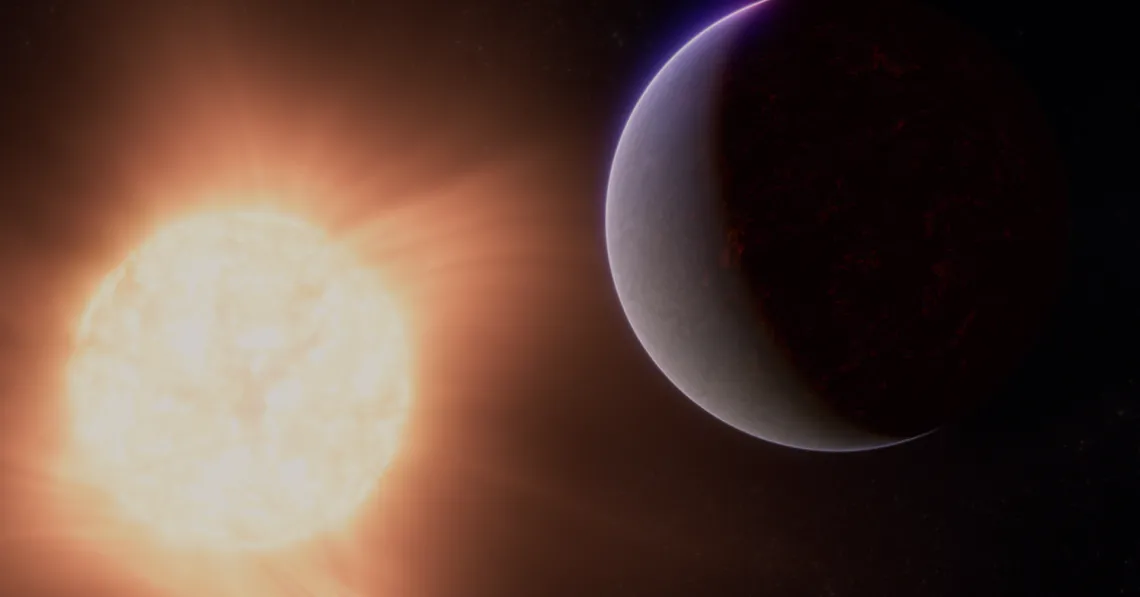NASA’s Webb Hints at Possible Atmosphere Surrounding Rocky Exoplanet

This artist’s concept shows what the exoplanet 55 Cancri e could look like
NASA, ESA, CSA, Ralf Crawford (STScI)
Researchers using NASA’s James Webb Space Telescope may have detected atmospheric gases surrounding 55 Cancri e, a hot rocky exoplanet 41 light-years from Earth. This is the best evidence to date for the existence of any rocky planet atmosphere outside our solar system.
Renyu Hu from NASA’s Jet Propulsion Laboratory (JPL) in Pasadena, California, is lead author on a paper published today in Nature. “Webb is pushing the frontiers of exoplanet characterization to rocky planets,” Hu said. “It is truly enabling a new type of science.”
55 Cancri e, also known as Janssen, is one of five known planets orbiting the Sun-like star 55 Cancri, in the constellation Cancer. With a diameter nearly twice that of Earth and density slightly greater, the planet is classified as a super-Earth: larger than Earth, smaller than Neptune, and likely similar in composition to the rocky planets in our solar system.
To describe 55 Cancri e as “rocky,” however, could leave the wrong impression. The planet orbits so close to its star (about 1.4 million miles, or one-twenty-fifth the distance between Mercury and the Sun) that its surface is likely to be molten – a bubbling ocean of magma. With such a tight orbit, the planet is also likely to be tidally locked, with a dayside that faces the star at all times and a nightside in perpetual darkness.
In spite of numerous observations since it was discovered to transit in 2011, the question of whether or not 55 Cancri e has an atmosphere – or even could have one given its high temperature and the continuous onslaught of stellar radiation and wind from its star – has gone unanswered.
“I’ve worked on this planet for more than a decade,” said Diana Dragomir, an exoplanet researcher at the University of New Mexico and co-author on the study. “It’s been really frustrating that none of the observations we’ve been getting have robustly solved these mysteries. I am thrilled that we’re finally getting some answers!”
Unlike the atmospheres of gas giant planets, which are relatively easy to spot (the first was detected by NASA’s Hubble Space Telescope more than two decades ago), thinner and denser atmospheres surrounding rocky planets have remained elusive.
Previous studies of 55 Cancri e using data from NASA’s now-retired Spitzer Space Telescope suggested the presence of a substantial atmosphere rich in volatiles (molecules that occur in gas form on Earth) like oxygen, nitrogen, and carbon dioxide. But researchers could not rule out another possibility: that the planet is bare, save for a tenuous shroud of vaporized rock, rich in elements like silicon, iron, aluminum, and calcium. “The planet is so hot that some of the molten rock should evaporate,” explained Hu.
